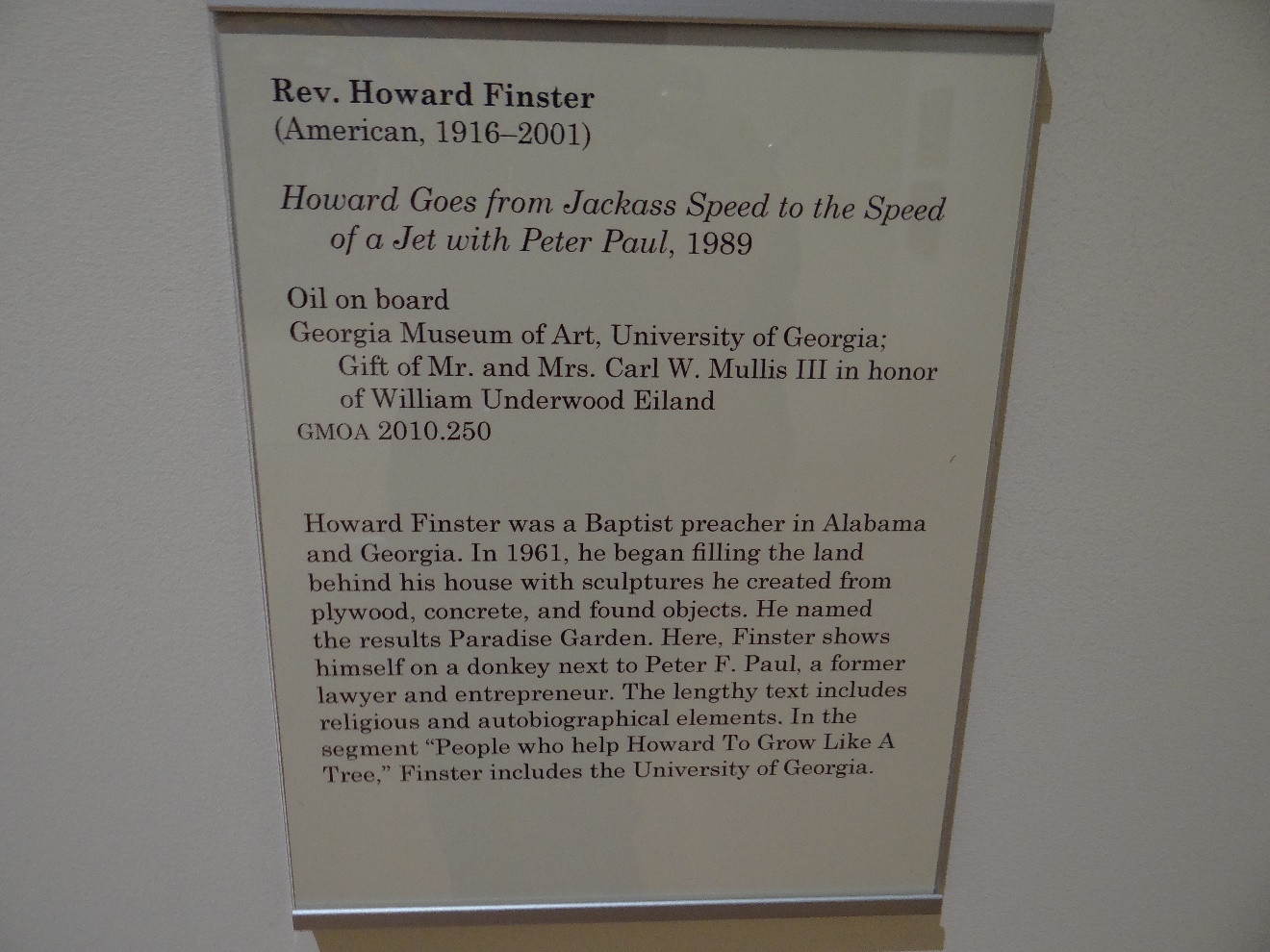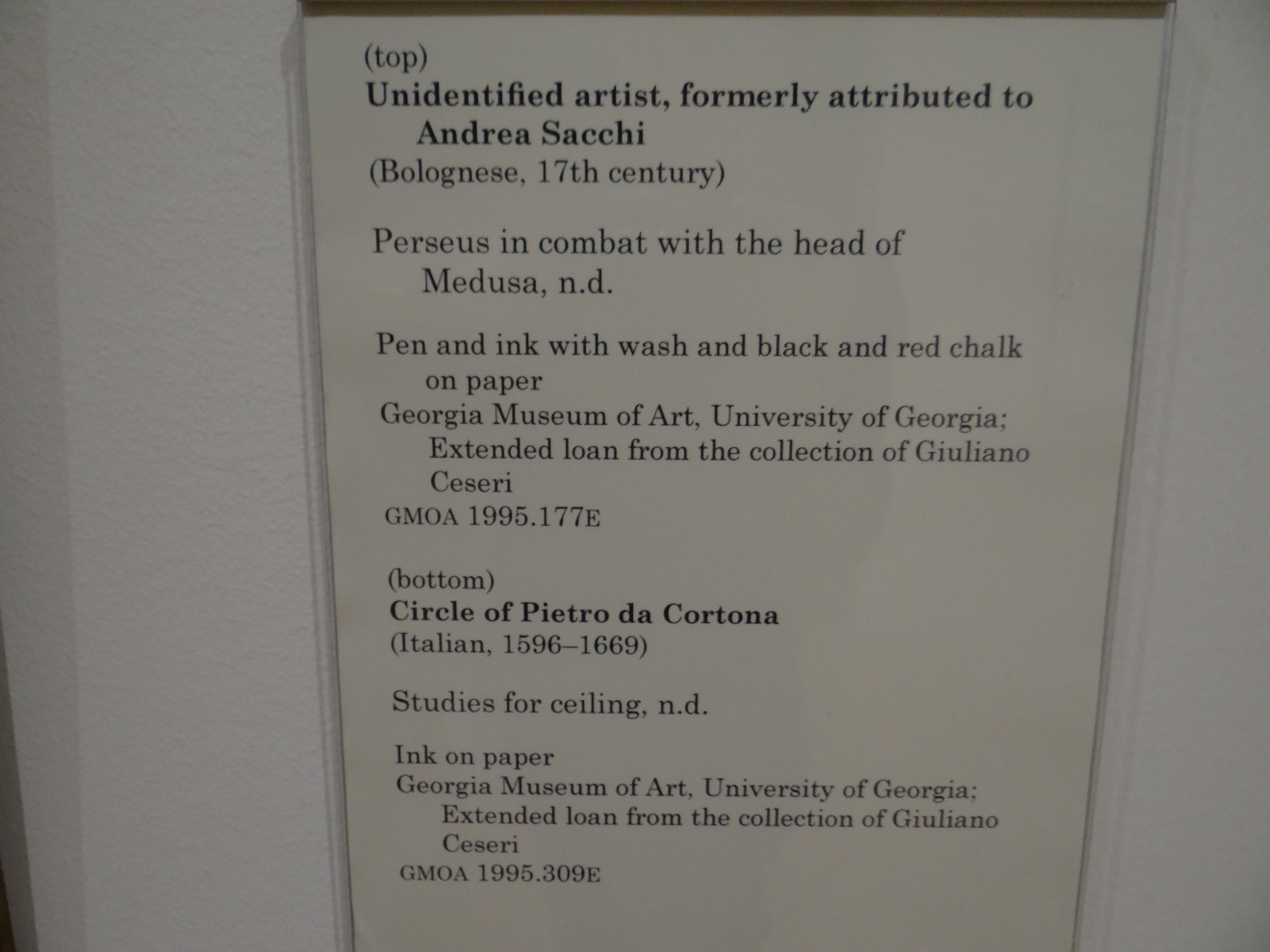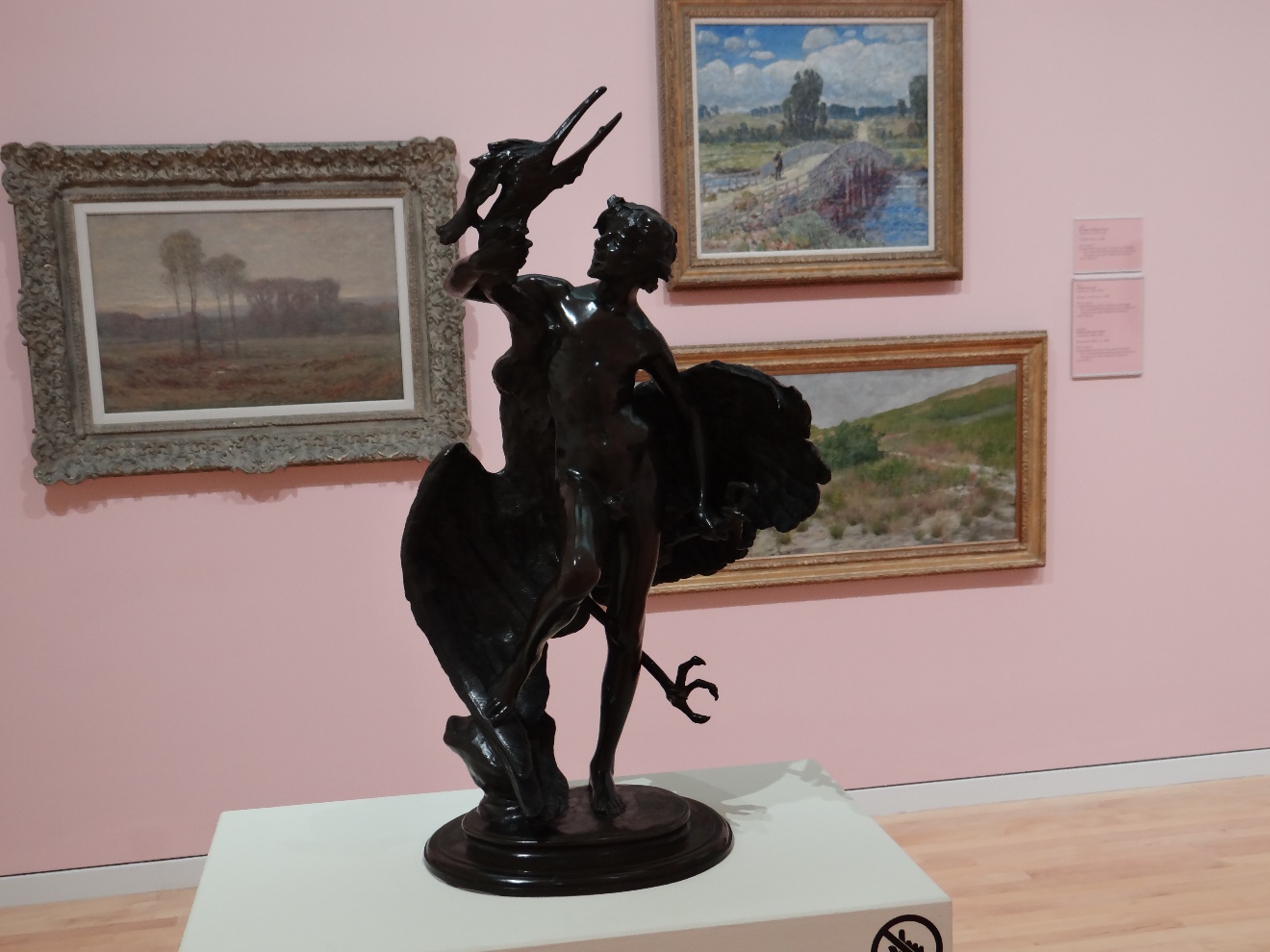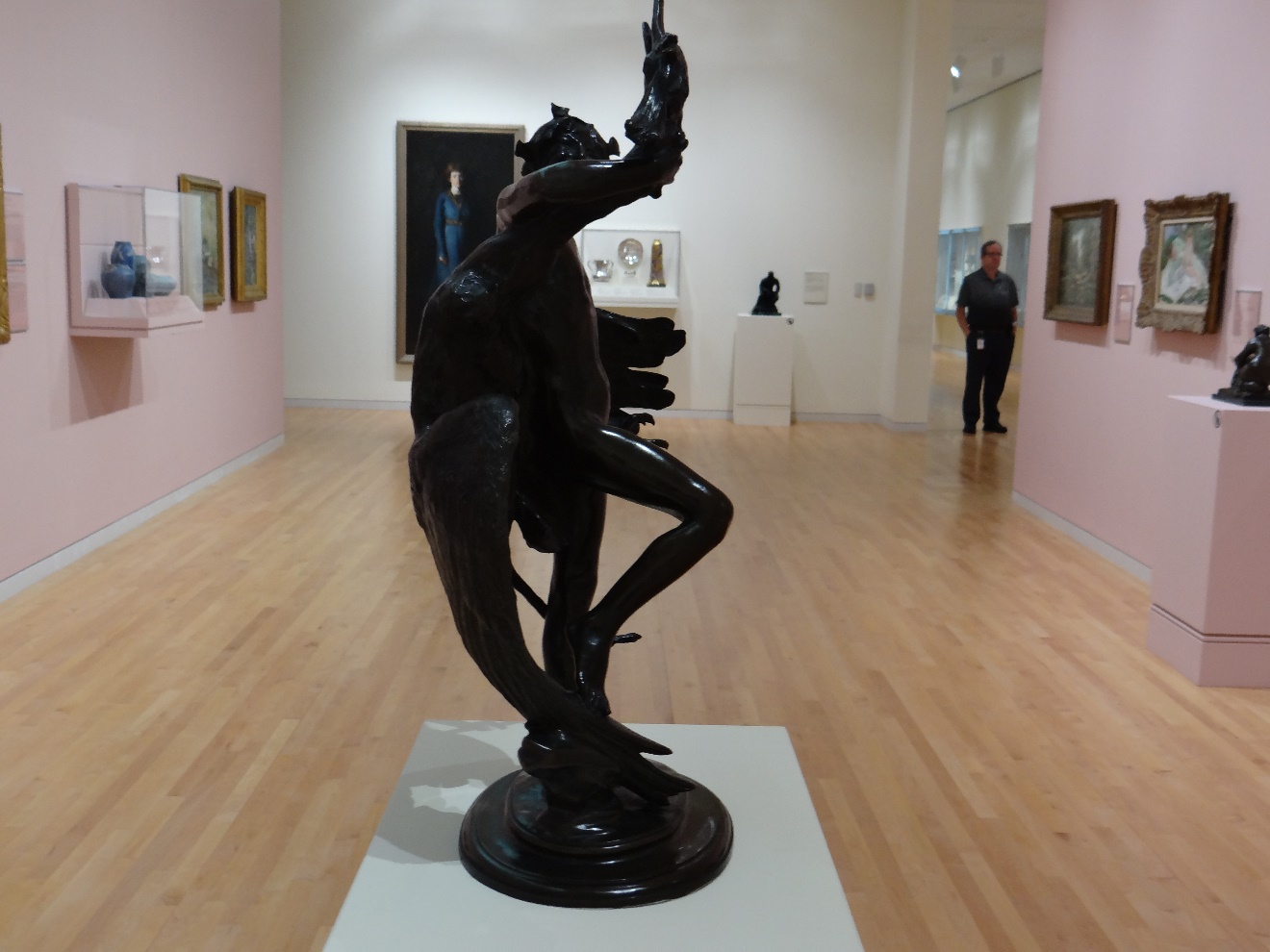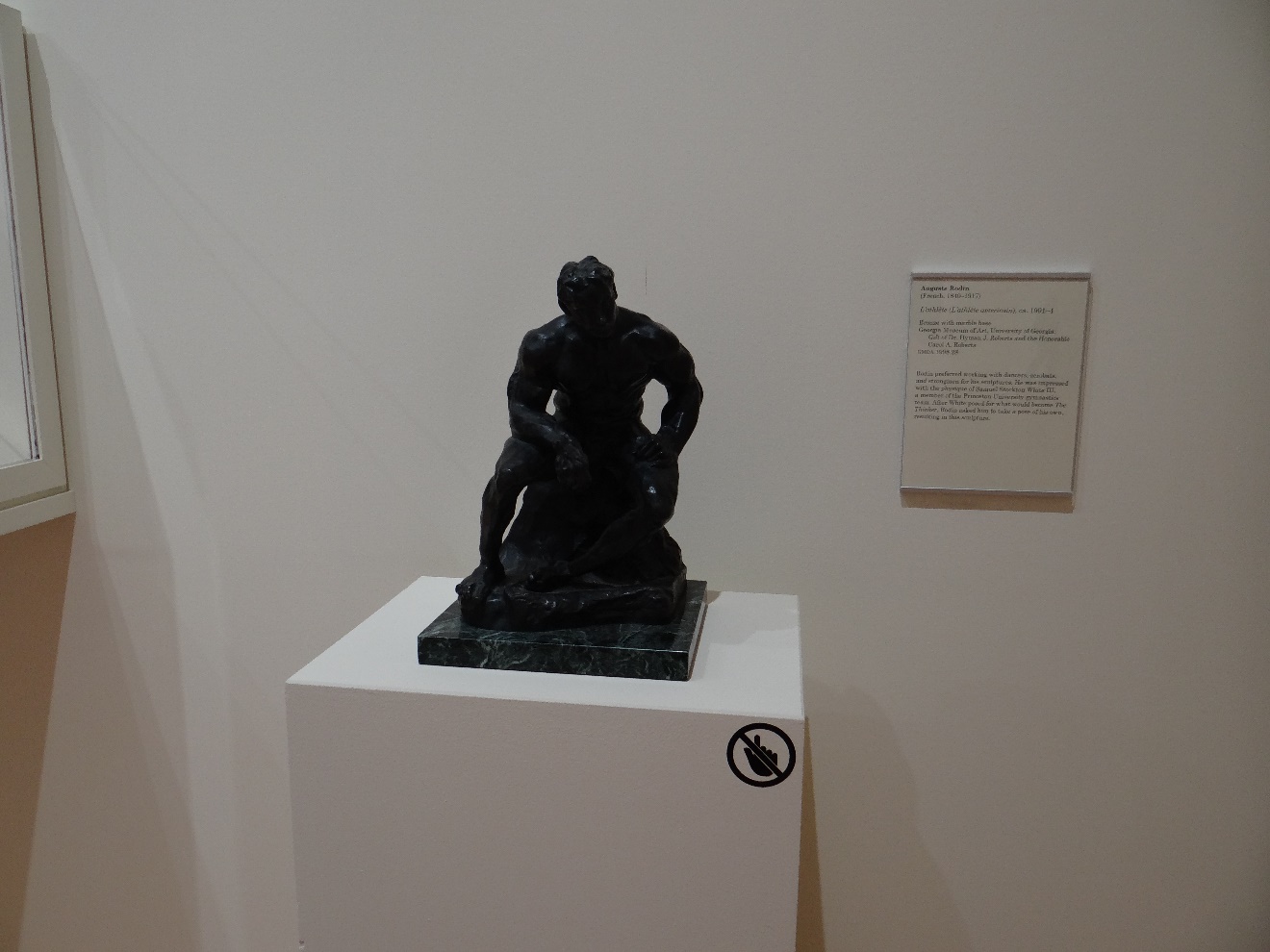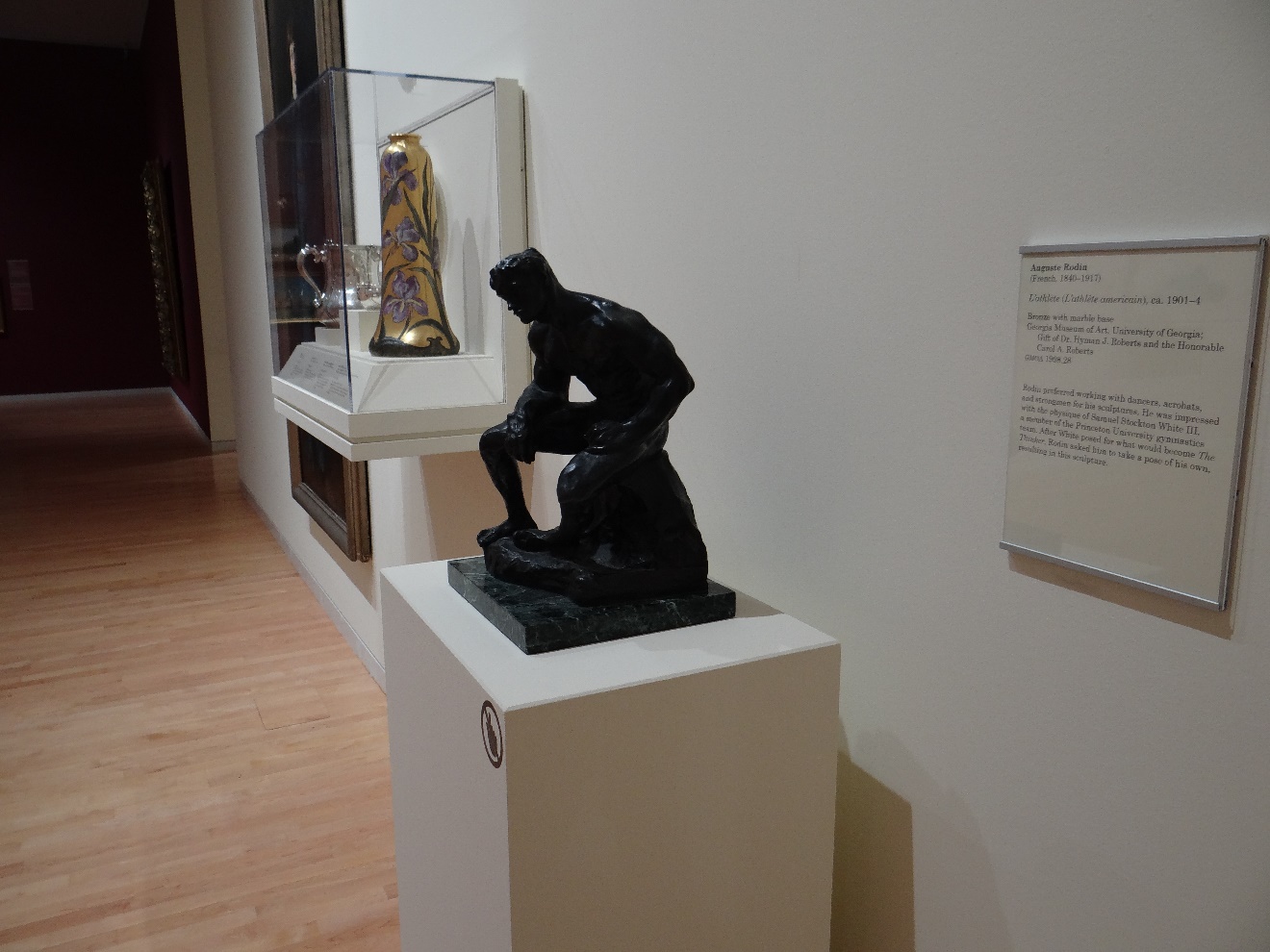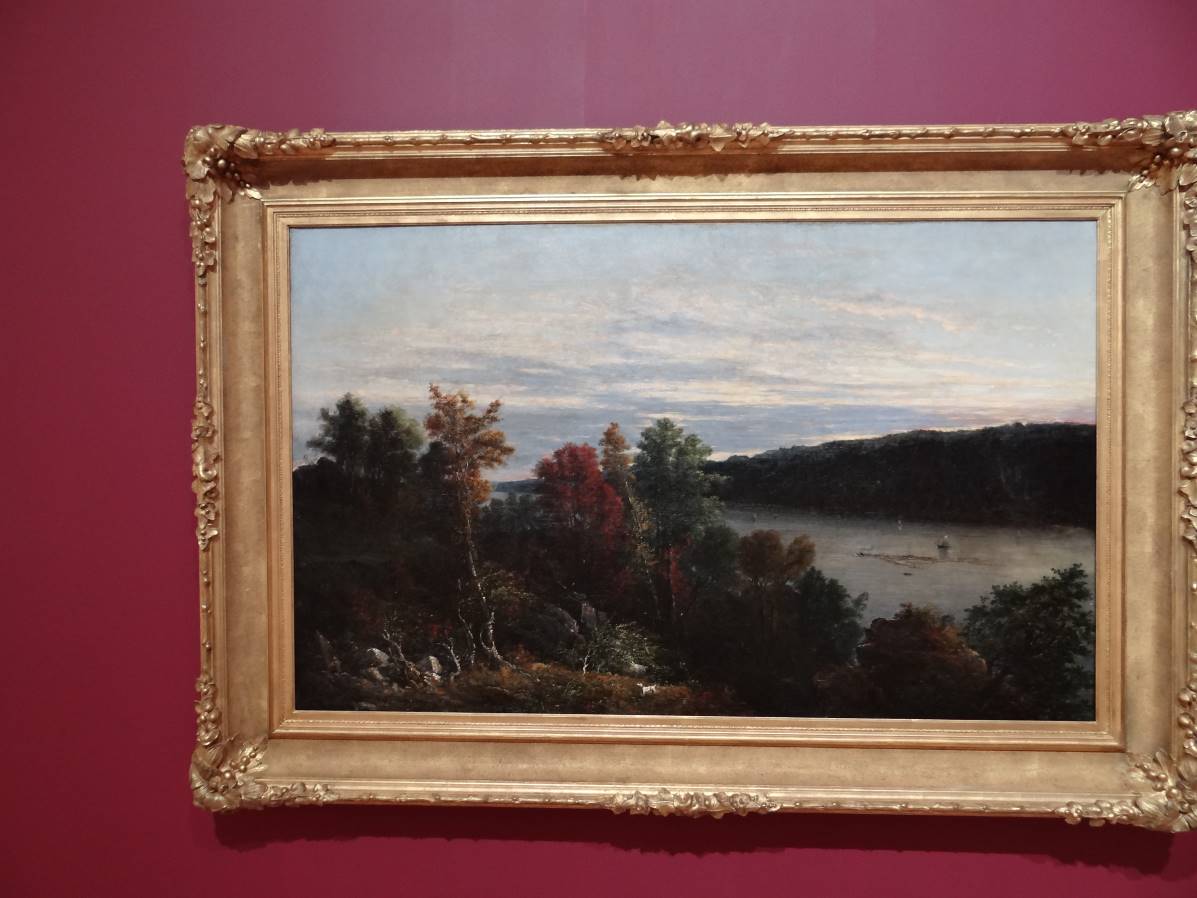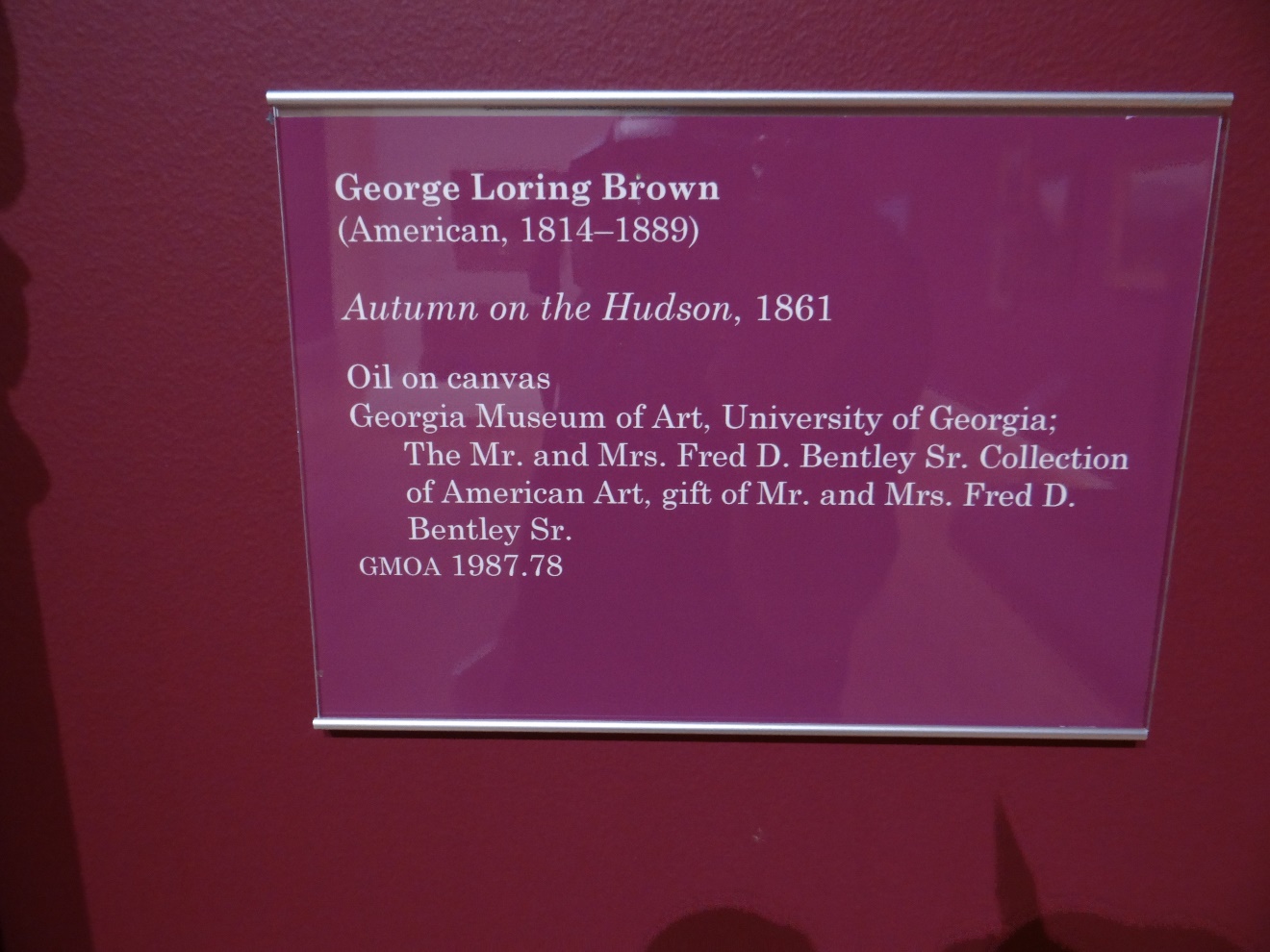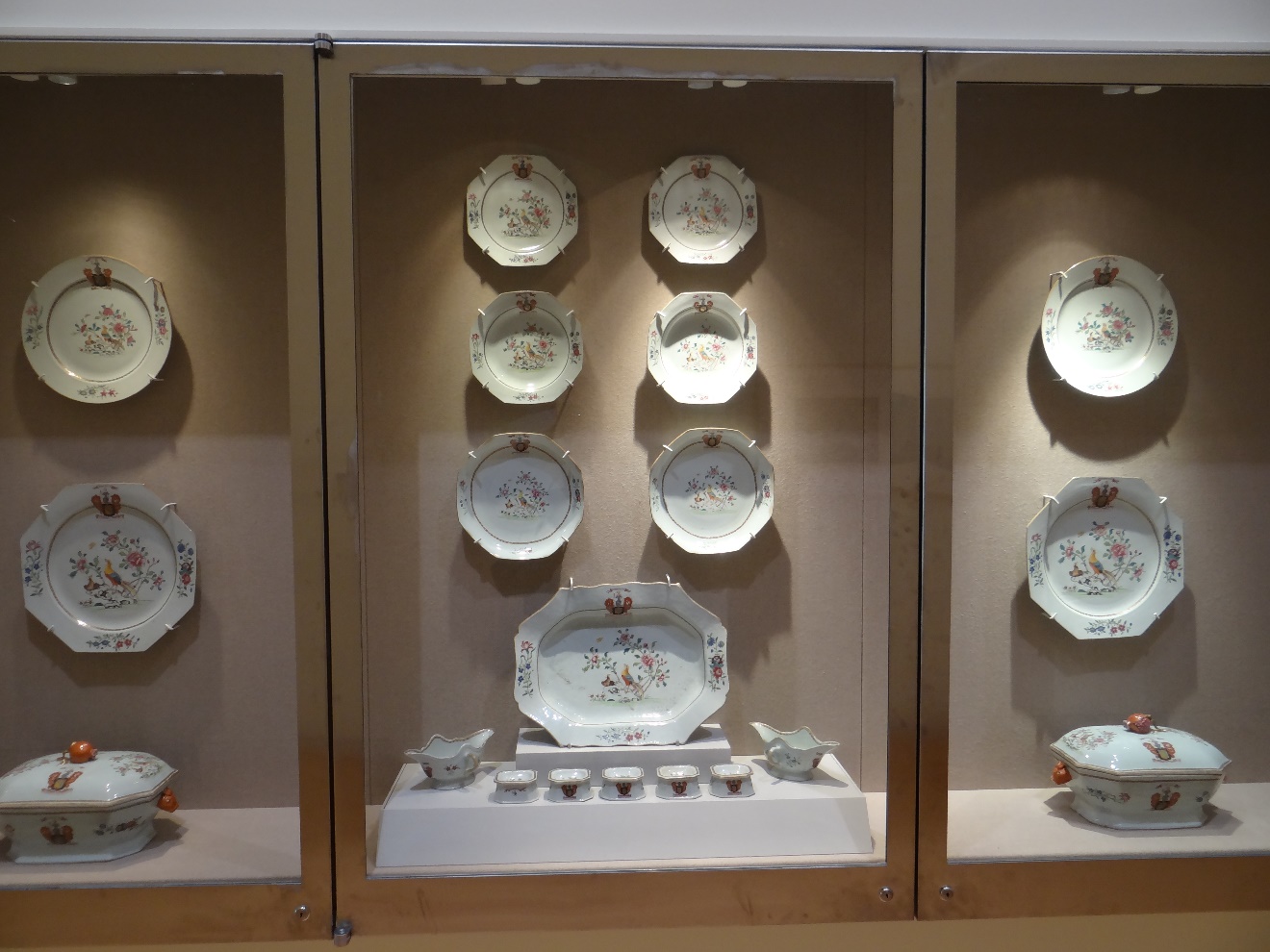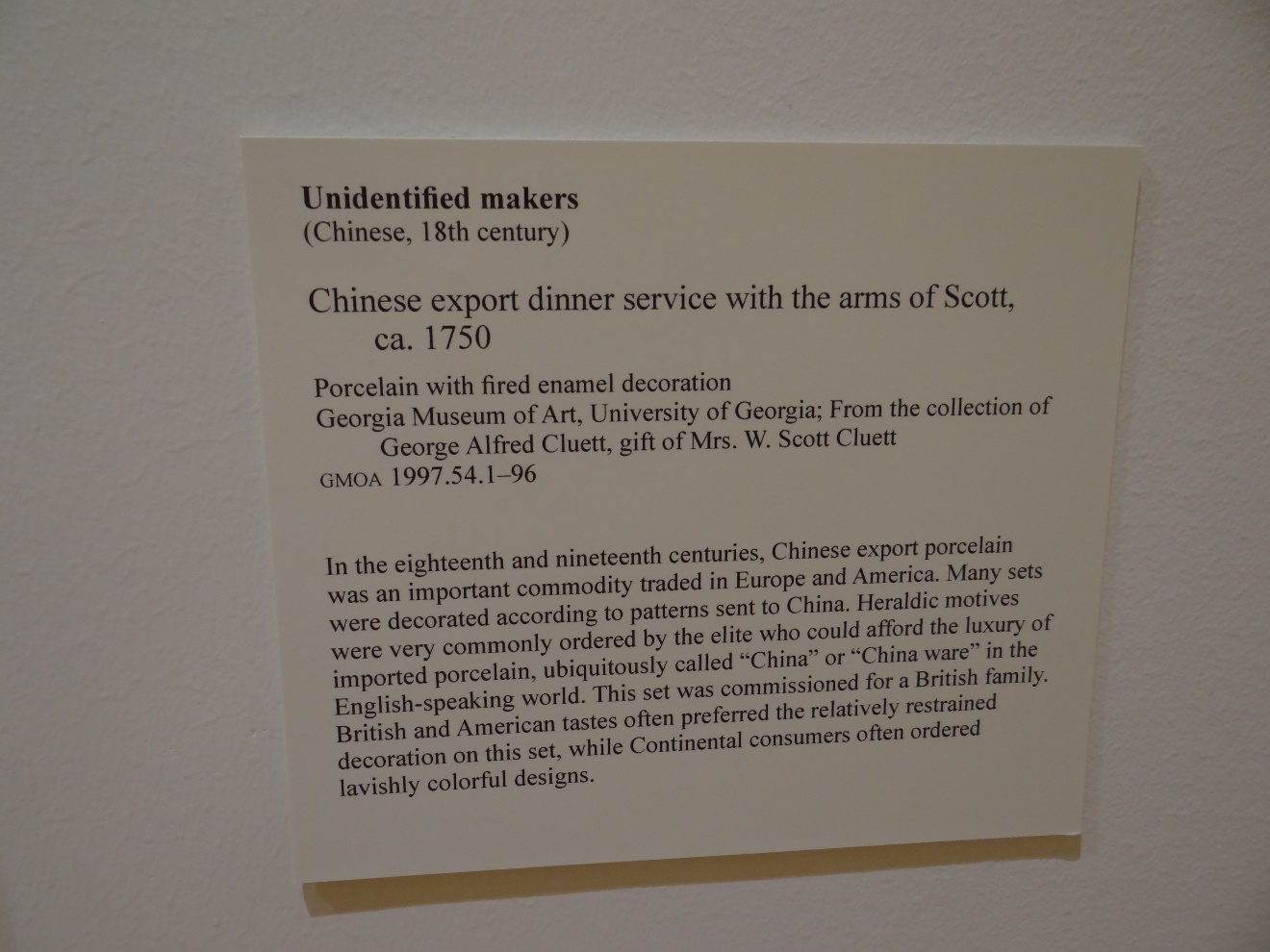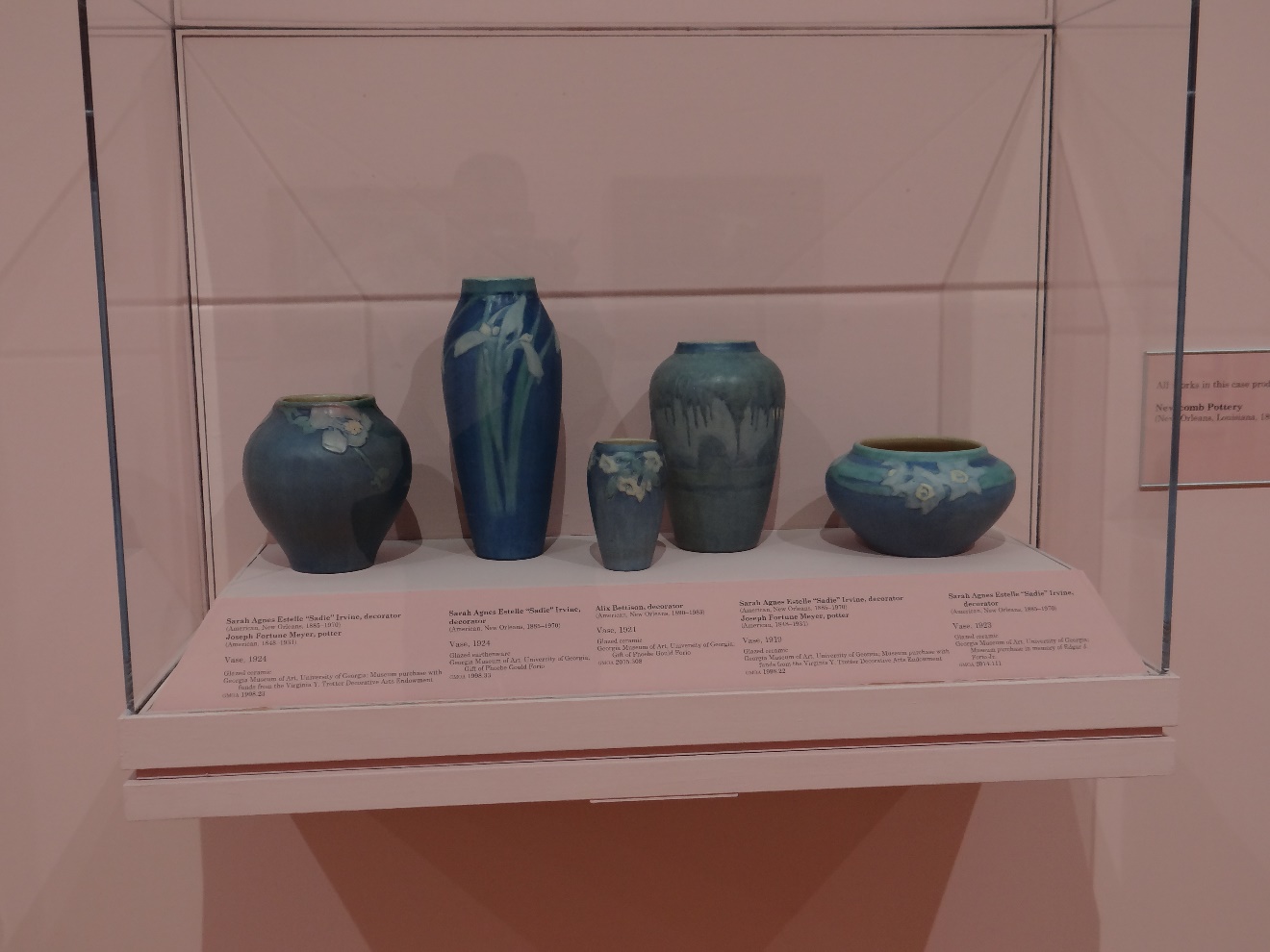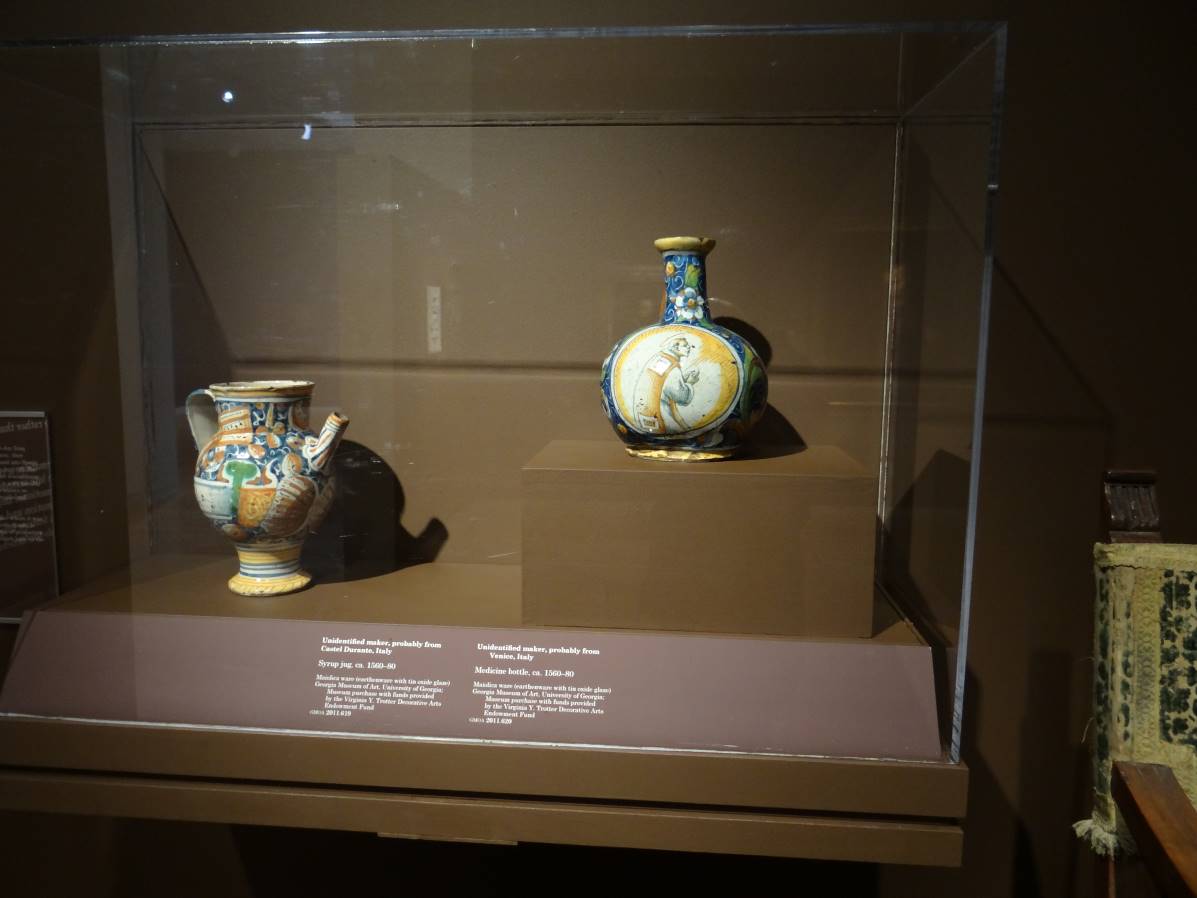Save your work regularly just in case, and when you are finished, save the final draft of your worksheet, compress the photos if needed, and then upload & submit on Blackboard.
Find an example of an artwork that has an overall cool colour palette (i.e. the majority of the colours must be cool, not just one small portion). Take a photo of the artwork & embed it below, and then answer the questions.
Photo:
Which cool colours do you see? :
Dark and light shades of green, yellow and blue. Mostly blue is dominating.
What is being represented here (visually or conceptually), and how does the use of cool colours relate? (1-2 full sentences):
This painting represents a scene of a small area in which their people are heading towards a building which seems to have religious significance, like a place to worship. The major portion of the picture is blue, and the building, which is the centre of attention, is also painted in blue so that viewers can get the concept.
Find an example of an artwork that has an overall warm colour palette (i.e. the majority of the colours must be warm, not just one small portion). Take a photo of the artwork & embed it below, and then answer the questions.
Photo:
Which warm colours do you see? :
Different shades of orange, red and brown from lighter to a darker shade.
What is being represented here (visually or conceptually), and how does the use of warm colours relate? (1-2 full sentences) :
It is a portrait of a king, and therefore this painting holds historical significance.
Find a figurative sculpture that is clearly inspired by Classical art. Take a photo of the sculpture & embed it below, and then answer the questions.
Photo:
Why do you believe this artwork to be inspired by Classical art? What details relate to the characteristics of Classical art that we’ve discussed? (2-3 full sentences) :
This piece of sculpture resembles classical art because it has simple engraving on the bust. It belongs to the archaic style of classical art in which there is stiffness and rigidity in the art.
Find an artwork that shows a clear implied or psychological line in the form of an eye-line, or where someone is looking in the image. Take a photo of the artwork & embed it below, and then answer the questions.
Photo:
Whose eye-line do you notice? :
The line reaching the neck of the naked person perpendicularly.
Towards where is the eye-line leading the viewer’s gaze? :
It leads the eyes of the viewer towards the end of the picture, starting from the head and all the way to legs.
Find an artwork that uses hatching, cross-hatching, or stippling to create the illusion of light and shadow. Take a photo of the artwork & embed it below, and then answer the questions.
Photo:
Is this hatching, cross-hatching, or stippling? :
Yes, because several lines have been sketched and used to shade the portions near the nose, eyes, and under lips. This shading and cross-hatching of lines give the picture its final look.
Find an artwork that is similar to or an actual example of Cubism, in which organic shapes are represented instead as angular, sharp geometric shapes. Take a photo of the artwork & embed it below, and then answer the questions.
Photo:
What is represented here that we would normally expect to be organically shaped? :
It seems to be abstract art in which the concept of love has been tried to demonstrated because the word can be clearly seen in the large black-sized cube present in the centre of the picture.
What geometric shapes have been used instead? :
The geometric shapes of cubes, rectangles and cuboids have been used.
Find a painting that displays a clear use of tenebrism. Take a look at the Caravaggio and Gentileschi tenebrist paintings in your textbook if you are unsure – your example should look like those! Take a photo of the artwork & embed it below, and then answer the question.
Photo:
What is the story or scene that is represented here, and how does the use of dramatic lighting help to enhance the drama and emotion? (2-3 full sentences) :
This painting reflects the practice of crucifixion, which was a common practice of punishing the people back in the time of Jesus Christ. The use of lighting to signify the story in the picture is very relevant. The way the background has been kept dark, and a spotlight is focused on the painting is signifying the drama in the scene.
Find an artwork that uses a palette mostly consisting of 2 complementary
colours – this means that these two colours should take up the majority of the artwork, not just one small portion. Take a photo of the artwork & embed it below, and then answer the question.
Photo:
Which two complementary colours?
The two contemporary colours used in this painting are orange and yellow.
Find a sculpture that creates the illusion of a visual texture. Take a photo of
The artwork & embed it below and then answer the questions.
Photo:
What textural illusions do you see? What is the visual texture? :
The texture of this sculpture seems to be wood that is polished perfectly, but it is just an illusion.
What is the actual texture of the artwork? :
The actual texture of this artwork is bronze.
Find a 2-D artwork that clearly uses a one-point perspective. Take a photo of
the artwork & embed it below and then answer the questions.
Photo:
Where are the lines of perspective (orthogonal)? :
All the green and grey lines in the picture extending throughout the space are called lines of perspective.
Where is the horizon line? :
The line separating the green land from the sky is the horizon point in this picture.
Where is the vanishing point? :
The endpoint of the ground going straight in one direction and meeting the sky when looked at from far is the vanishing point.
(Note: For these questions above (#10), you may answer by labelling and editing your photo in an image editing program and then embedding the edited image here, if you wish. Ensure you have properly labelled the orthogonals, the horizon line, and the vanishing point.)
Find a painting that clearly uses atmospheric perspective, with a haze in the background of the image and sharper foreground details, creating the illusion of depth. Take a photo of the artwork & embed it below, and then answer the question.
Photo:
Briefly describe the use of atmospheric perspective here – Where do you start to see the details getting hazy? Do they continue to get hazier the further back in space you go? Which foreground details are more obviously sharp & clear? (2-3 full sentences) :
If the picture is observed keenly, it is overall a hazy atmospheric perspective which starts right from the sky and finishes on the wavy grass. The strokes and the colour combination of blue and grey make the sky hazier, and only on the ground where the grass is shown, the details of the painting get clear and a bit sharp because of the use of red and green colours.
12.) Find an artwork that displays the concept of trompe l’oeil. Take a photo of the
artwork & embed it below and then answer the questions.
Photo:
What about this artwork “tricks the eye”? What are you tricked into believing you are seeing? (2-3 full sentences) :
The three-dimensional aspect of this artwork makes it a bit tricky for the eyes. It has been sculptured in a way that the viewer can get an illusion at first sight that what he is looking at because it has a shadow and proper humanly appearance. So, viewers have to look a second time to realize that it is just a piece of sculpture standing right in the middle.
Find an artwork that displays implied motion. Take a photo of the artwork & embed it below, and then answer the question.
Photo:
Describe the implied motion – how do you think it relates to what the artist might trying to be communicating? (2-3 full sentences) :
This painting is an example of implied motion because the connection and the position of the two subjects in the painting is indicating the movement which is about to take place between them like the subject in the clouds is handing something to the subject on the ground.
14.) Find an example of actual Renaissance art – art from Italy in the 1400- 1500s that displays the characteristics of the Renaissance. Take a photo of the artwork, as well as a photo of the label next to the painting that states the location and date, embed both images below, and then answer the question.
Photo:
Photo of the label:
Using information from the textbook and lessons, what characteristics of Renaissance art do you see displayed in this piece? (2-3 full sentences) :
Virgin Mary was one of the major topics of Renaissance art as mentioned in the label, which becomes one of the characteristics of renaissance art that is displayed in this painting. Secondly, the blue background is also one of the characteristics of such art, along with the use of light and dark shades.
Find an example of actual Baroque art – art from Europe in the 1600-1700s
that displays the characteristics of the Baroque. Take a photo of the artwork, as well as a photo of the label next to the painting that states the location and date, embed both images below, and then answer the question.
Photo:
Photo of the label:
Using information from the textbook and lessons, what characteristics of Baroque art do you see displayed in this piece? (2-3 full sentences) :
This painting is an example of Baroque art because it depicts the exaggerated motion and tension which is a part of such art. Moreover, it reflects the tenebrism as well, just like baroque art.
Find an artwork that uses a very clear sense of symmetrical balance. Take a photo of the artwork & embed it below and then answer the question.
Photo:
Describe the symmetrical balance displayed here – Is it perfect symmetry or approximate symmetry? Describe how the halves are balanced. (1-2 full sentences) :
It is approximate symmetry in which the picture is perfectly halved from the middle with the help of a clear separation of line, and the cubes inside have varied symmetry but the same shape.
Find an artwork that uses asymmetrical balance. Take a photo of the artwork & embed it below, and then answer the questions.
Photo:
Which side has more visual weight? :
The central yellow portion of the picture holds more visual weight.
What details cause that side to have more visual weight than the other? (1-2 full sentences) :
The use of bright yellow colour in the middle with no symmetrical shapes in any specific portion of the picture makes it asymmetrical because the objects are not arranged in any order.
18.) Find an example of a 2-D artwork that displays optical colour. Take a photo of
the artwork & embed it below and then answer the questions.
Photo:
What kind of lighting or atmospheric changes do you think created this sense of optical color? (1-2 full sentences) :
The use of warm and reddish shades depicts the dim light conditions in which such colors radiate.
If the scene in this artwork were presented under normal lighting conditions, what would the local colors of various details in the scene be? (1-2 full sentences) :
If this scene was presented in normal lighting then the use of dark shades would have been more and the use of warm colors would have been less prominent.
19.) Find a 2-D artwork with 3 or more figures/people in the composition, but where one of the numerous figures is clearly the focal point of the image. Take a photo of the artwork & embed it below, and then answer the question.
Photo:
Who is the focal point? :
The focal point is the guy standing in the middle.
How is the focal point emphasized? (2-3 full sentences) :
He has been emphasized by his central position. Moreover, his posture and the color combination also reflect that he is the main focal point. The shape of his body draws the attention of the viewer.
20.) Find a sculpture (NO FURNITURE) that is represented in a scale other than life-sized. Take a photo of the artwork & embed it below, and then answer the questions.
Photo:
Is this small-scale or large-scale? :
It is a small scale.
Why do you think the artist chose to depict this particular scale? (1-2 full sentences) :
Since it is the sculpture of a cock with no particular message, therefore; the artist might think not to choose a life-sized scale and go with this one.
21.) Find a 2-D artwork that uses hierarchical scaling in the depiction of human figures. Take a photo of the artwork & embed it below, and then answer the questions.
Photo:
Which figure(s) is larger in scale? :
Mother is larger in scale.
Why might that figure(s) be considered more important? (1-2 full sentences) :
It is a painting of a mother with a child, and the mother is holding her daughter, which attracts the vision of viewer towards herself. Therefore, it holds more significance, and her large scale helps too.
Find an example of abstract art that is representational – it must have an
object, figure, etc., represented that is recognizable but presented in an abstract style. Take a photo of the artwork & embed it below, and then answer the questions.
Photo:
What recognizable objects or subjects do you see represented? :
Four people are on the left side of the picture, and a few of them can be seen on the top of the picture too. Moreover, a large oval-shaped face can be seen in the right corner of the picture.
How is the image abstracted? Describe how the representation differs from naturalism. (1-2 full sentences) :
The representation of the objects is not clear and sharp. Also, the amalgamation of all colours and mixed strokes make it more abstract than natural.
Find an example of nonobjective (or nonrepresentational) art. Take a photo of the artwork & embed it below, and then answer the questions.
Photo:
Even though nothing recognizable is represented here, what do you think the “meaning” of this artwork is? Why do you think the artist created this, and what do you think the viewer is supposed to think or feel when looking at this artwork? (2-3 full sentences):
Nothing is clearly highlighted in this picture since all the strokes and colours are mixed, but the meaning of this picture can be interpreted as colours of life which are intermixed. Yellow and white can be the colours of joy, and red and blue can be the colours of sadness. Every viewer will observe it according to his perception.
Find an artwork that displays a clear usage of iconography. Take a photo of the artwork & embed it below and then answer the questions.
Photo:
Describe the iconography – what icons or symbols do you see used? The major icon seen in this painting is the symbol of the cross. What does the iconography represent? (1-2 full sentences) :
This symbol is mostly used to reflect the religion of Christianity and faiths in the religion.
Find a painting that displays the characteristics of Impressionism – big, visible, loose brushstrokes, a focus on the light in the scene, and typically an outdoor scene. Take a look at the artwork of Claude Monet and Camille Pissarro if you are not sure what Impressionism looks like. Take a photo of the artwork & embed it below, and then answer the question.
Photo:
Using information from the textbook and lessons, what characteristics of Impressionism do you see displayed in this piece? (2-3 full sentences) :
Characteristics which make it a piece of impressionism are sharp and clearly visible brush strokes with more lighting. Similarly, the outdoor scene of a bridge over the lake proves that it belongs to impressionism.
Find an example of an oil painting. Take a photo of the artwork, as well as a photo of the label next to the painting that states the medium is oil, embed both images below, and then answer the question.
Photo of artwork:
Photo of the label:
Using information from the textbook and lessons, what characteristics of oil paint do you see in this piece? (1-2 full sentences) :
The remarkable luminosity of the colours and the transparency make it an oil painting.
Find an example of an acrylic painting. Take a photo of the artwork, as well as a photo of the label next to the painting that states the medium is acrylic, embed both images below, and then answer the question.
Photo:
Photo of the label:
Using information from the textbook and lessons, what characteristics of acrylic paint do you see in this piece? (1-2 full sentences) :
The milky and bit translucent appearance of colours in the painting clearly differentiates the acrylic painting from oily. It lacks the finishing and purity of the colours.
Find an example of a mixed media artwork. Take a photo of the artwork, as well as a photo of the label next to the artwork noting that it is mixed media, embed both images below, and then answer the question.
Photo:
Photo of the label:
What are the materials used in this artwork? (1-2 full sentences) :
The materials used in this painting are oil used on the board.
29.) Find an example of an artwork created using one of the four printmaking processes discussed in class. Take a photo of the artwork, as well as a photo of the label next to the artwork, noting what kind of print medium it is, embed both images below, and then answer the question.
Photo:
Photo of the label:
From the following choices – relief, intaglio, lithography, or screen-print – which type of printmaking process was used to create this artwork? :
It is an example of the lithography technique of painting.
Find an example of a relief sculpture. Take a photo of the artwork from the front, and then take another photo slightly from the side to show the relief depth; embed both images below, and then answer the questions.
Photo from the front:
Photo from the side:
Is this high relief or low relief? :
High relief
What material (medium) was this relief made from? :
Bronze medium is used for the construction of this sculpture.
31.) Find an example of a freestanding, in-the-round marble sculpture. Take at least three (3) photos of different views of the sculpture (e.g. front, back, left side, right side, etc.), and embed all of the images below.
Photo 1:
Photo 2:
Photo 3:
32.) Find an example of a bronze sculpture. Take a photo of the artwork, as well
as a photo of the label next to the artwork noting that it is bronze, embed both
images below, and then answer the question.
Photo:
Photo of label:
How has the bronze surface been treated? Is there a colored patina, weathering, or has it been buffed and polished? (1-2 full sentences) :
The surface of bronze has been treated with buffing and polish, which gives it a shiny appearance.
33.) Find an example of a photograph. Take a photo of the artwork, as well as a photo of the label next to the artwork noting the type of photographic medium, embed both images below, and then answer the questions.
Photo:
Photo of label:
What is the subject of this photograph? :
Nature
What is the content of this photograph? (2-3 full sentences) :
This photograph presents a scene of autumn in Hudson. The clear sky and the trees with yellow or red leaves along the lake is a depiction of autumn prevailing in Hudson.
34.) Find an example of decorative porcelain pottery. Take a photo of the artwork, as well as a photo of the label next to the artwork noting the medium, embed both images below, and then answer the question.
Photo:
Photo of label:
How does this artwork display some of the characteristics of porcelain discussed in class lessons and the textbook? (2-3 full sentences) :
Its white colour, toughness and hard texture make it a porcelain-based artwork. Moreover, the translucency and the factor of resonance are also characteristics of porcelain.
Find an example of at least three (3) blown-glass vessels. Take a photo of all three artworks, and embed all of the images below.
Photo 1:
Photo 2:
Photo 3:



































